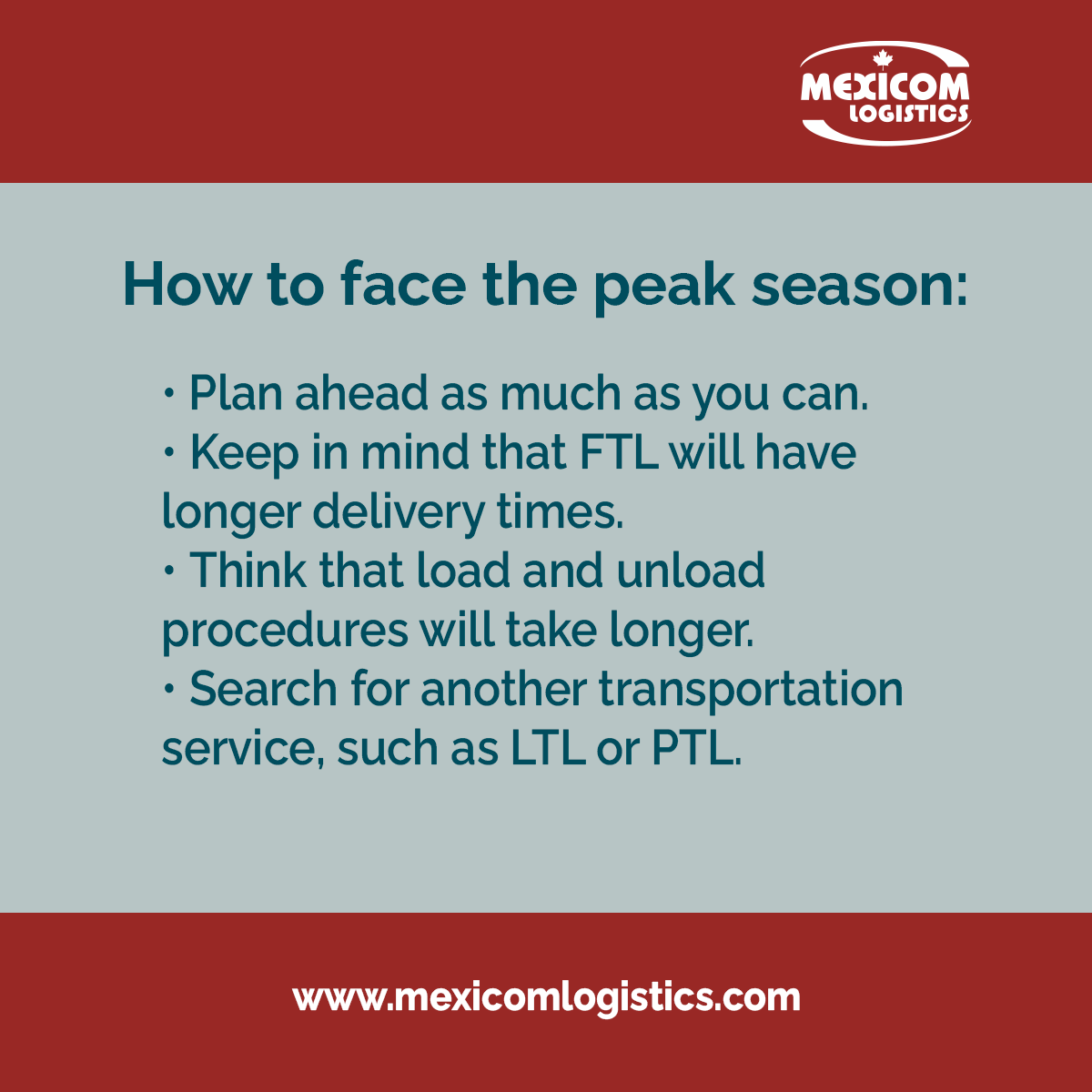Ground transportation outlook for Q2 2021 in Canada, the U.S. and Mexico
It could seem like the vaccination process is in motion and that the Covid-19 pandemic is ending in some places like North America, however, this is far from the case in the transportation industry and until it is over we can not do damage assessment on the ground transportation outlook.
Ground transportation outlook: what can we expect for Q2 2021?
- Face the trailer problem and truck optimization.
At the beginning of the pandemic, the forecast was that commerce would decrease, but changes in demand due to suspension of activities increased the movement of electronics and consumer goods.
During the second quarter of 2021, as the lockdown and social distance measures get relaxed and the recovery starts to show in some countries but not in others, the container imbalance started to affect terrestrial freight transportation.
Market growth made obvious the need for additional trailers. In North America, the trailers are not being fully used, and it even could be that only 50% of them are available. The challenge is to put them all on the road again.
To have a background we could say that truck prices in Canada increased 10% in the 2021 last couple of months, while in the U.S. the change was about 20%. For specialized trucks, in Canada, the rise was up to 2%, but in the U.S. it was 16% higher. These statistics directly impact new the acquisition of trailers and trucks by 3PLs, and hence, in the number of available units.
Some specialists in the subject say that the area could become a sort of neutral spot for terrestrial transportation, without ruthless competition and a collaboration between the related parts in a way that if someone needs a load, he could use the trailer in his possession.
Some companies already have digital platforms, where they publish their availability, but it would need to be something general to make a change. We would need to improve the trailer tracking to ensure that they are returned to their origin or be relocated instead of having them stranded.
The tendency is to use the drop and hook loads to make the most of the driver’s schedules, who are being paid by the mile and shippers can load and unload the trailer as they need. However, this leads to empty trailers waiting for a driver to pick them up. This eventually means inefficiency.
Container bottlenecks in ports, that happened without any contingency plans, are still a problem, and the Suez Canal blockade did not help at all. Right now, the demand imbalance in North America is even worse, there are empty trailers where they are not needed, and relocating them will not be easy, and freight transportation rates will keep rising through 2021 or until the merchandise flow gets back to normal.
While this happens, agencies such as the United Nations Conference on Trade and Development (UNCTAD) recommend establishing commercial agreements to help the commerce and transportation between countries and businesses in the industry, such as digitization of supply chains to make them even more resilient.
- Driver shortage: is it a pandemic effect?
The problem with the driver shortage has limited the market growth since before the pandemic started, and it has only made it worse. Measures to reduce contagion increase the need for local delivery, but it also meant fewer trucks and drivers on the road.
This crisis has only shown the need for a change in the perception of the industry around the world to attack new workers in the industry.
Above all this, there still are mobility restrictions in some places, and in others, the requirements to carry a load or to drive through the area have changed. For example, there are places where drivers need to show a negative Covid-19 test. 
- Peak season from Mexico.
All along peak season, freight rates usually go high up to 10%, not only because demand increases but also due to vehicle inspections. Besides, when carriers design their floats and plan their trips thinking only in the peak seasons has an impact on the trailer flow.
When we talk about reefers, it could be that this season they are all used, especially during the season of perishable goods from Mexico. To face these months, you need to:
- Plan ahead as much as you can.
- Keep in mind that Full Truck Loads (FTL) will have longer delivery times.
- Think that load and unload will take longer.
- Search for another transportation service, for example, Less than Truckload (LTL) or Partial Truckload (PTL).
Sources
https://www.freightwaves.com/news/maximizing-trailer-utilization-why-is-it-so-hard
https://www.freightwaves.com/news/consumers-take-a-breather-freight-volumes-push-higher
https://www.hellenicshippingnews.com/freight-boom-is-not-without-downsides-for-carriers/
https://unctad.org/system/files/official-document/presspb2021d2_en.pdf









